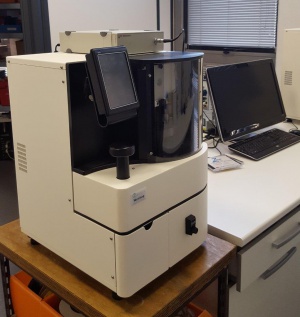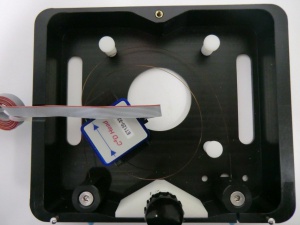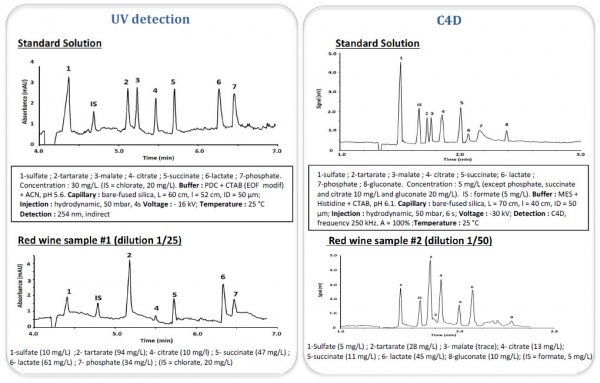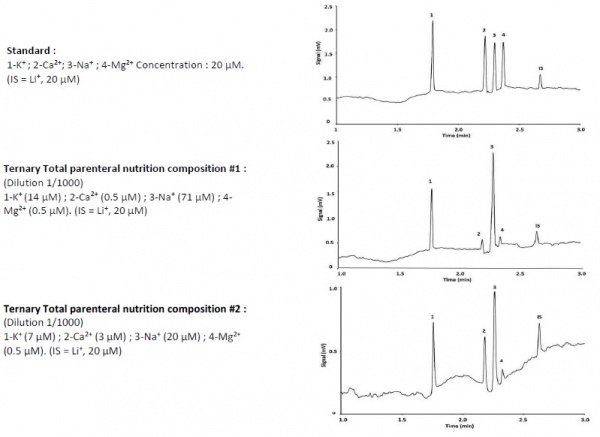Connecting the C4D to the WynSep Wyn-CE
How to connect the eDAQ C4D system to the WynSep Wyn-CE instrument.
Contents
Equipment Required
- C4D hardware unit, either:
- ER815 C4D Detector to use the WynSep data acquisition software
- ER815R C4D Detector to use either the WynSep data acquisition or PowerChrom software
- ER225 C4D Data System to use PowerChrom software or
- ET120 C4D Headstage for Capillary Electrophoresis
- WynSep Wyn-CE instrument
Choice of Software
The data from both C4D and UV-Visible detectors can be recorded and displayed in real time, using either the eDAQ PowerChrom software or the WynSep data acquisition software. Choose the:
- ER225 C4D Data System to use PowerChrom software. The analog output of the WynSep UV detector is connected to the analog input of the ER225. PowerChrom software records the data from both detectors.
- ER815 C4D Detector, to use WynSep data acquisition software. The analog output from the ER815 is connected to the WynSep instrument, so the WynSep data acquisition software records data from both detectors.
Installing the C4D Headstage in the WynSep Wyn-CE Cartridge
It’s easy to mount the C4D headstage inside the WynSep Wyn-CE cartridge. Simply thread the capillary through the channel in the side of the C4D headstage and fix in place.
Ensure that you position the C4D headstage near the end of the capillary that is grounded, away from the end of the capillary where the high voltage is applied. This is to ensure that the high voltage doesn’t arc from the background electrolyte inside the capillary, through the thin wall of the capillary, to the headstage and on to the C4D hardware, which could damage the equipment.
You should ensure that the C4D headstage and its flat grey cable are at least 1 cm away from the capillary as it loops inside the cartridge. This is to prevent the high voltage inside the capillary from shorting through the headstage and its cable, which are both electrically grounded.
You should also ensure that the C4D hardware unit is connected to an electrical socket which is grounded. Connect the C4D hardware directly to the electrical socket in the wall, not using an electrical power board.
Applications
Comparison between C4D and UV Detectors for the Analysis of Organic Acids
The WynSep Wyn-CE was used to compare C4D and UV detectors when analysing organic acids in a standard solution and in red wine.
C4D Conditions
- Buffer : MES + Histidine + CTAB, pH 6.1
- Capillary : bare-fused silica, L = 70 cm, l = 40 cm, ID = 50 μm
- Injection : hydrodynamic, 50 mbar, 6 s
- Voltage : -30 kV
- Detection : C4D, frequency 250 kHz, amplitude = 100%
- Temperature : 25 °C
UV Conditions
- Buffer : PDC + CTAB (EOF modifier) + ACN, pH 5.6
- Capillary : bare-fused silica, L = 60 cm, l = 52 cm, ID = 50 μm
- Injection : hydrodynamic, 50 mbar, 4s
- Voltage : - 16 kV
- Detection : 254 nm, indirect
- Temperature : 25 °C
Results
The results are shown in Figure 1.
A comparison of the limits of detection of the organic acids, using the two detection methods, is shown in Figure 2.
The C4D showed high sensitivity compared to the UV detector. The limit of detection was between 3 and 25 times better for the C4D than for the UV detector, de-pending on the organic acid being measured.
Another advantage is the fact that the C4D doesn’t require a window to be scratched into the capillary. The C4D headstage can simply be moved along the capillary to the required position and it can easily be altered if needed. No UV lamp is needed. C4D is a universal method which detects all ionised species; this may make the C4D less selective than the UV detector.
Determination of Cations in Total Parenteral Nutrition
The cations K+, Na+, Ca2+ and Mg2+ in total parenteral nutrition composition were measured using the Wyn-CE capillary electrophoresis system and the eDAQ contactless conductivity detector (C4D).
C4D Conditions
- Buffer : Glacial acetic acid + L-Histidine, pH 4.1
- Capillary : bare-fused silica, L = 65 cm, l = 50 cm, ID = 50 μm
- Injection : hydrodynamic, 50 mbar, 8 s
- Voltage : +30 kV
- Detection : C4D, frequency 500 kHz, amplitude = 100%
- Temperature : 25 °C
Results
The electropherograms for the cations in total parenteral nutrition are shown in Figure 3.
Repeatability (n=10): RSD (normalized migration times) = 0.4 %; RSD (normalized corrected areas) = 1.8 %




